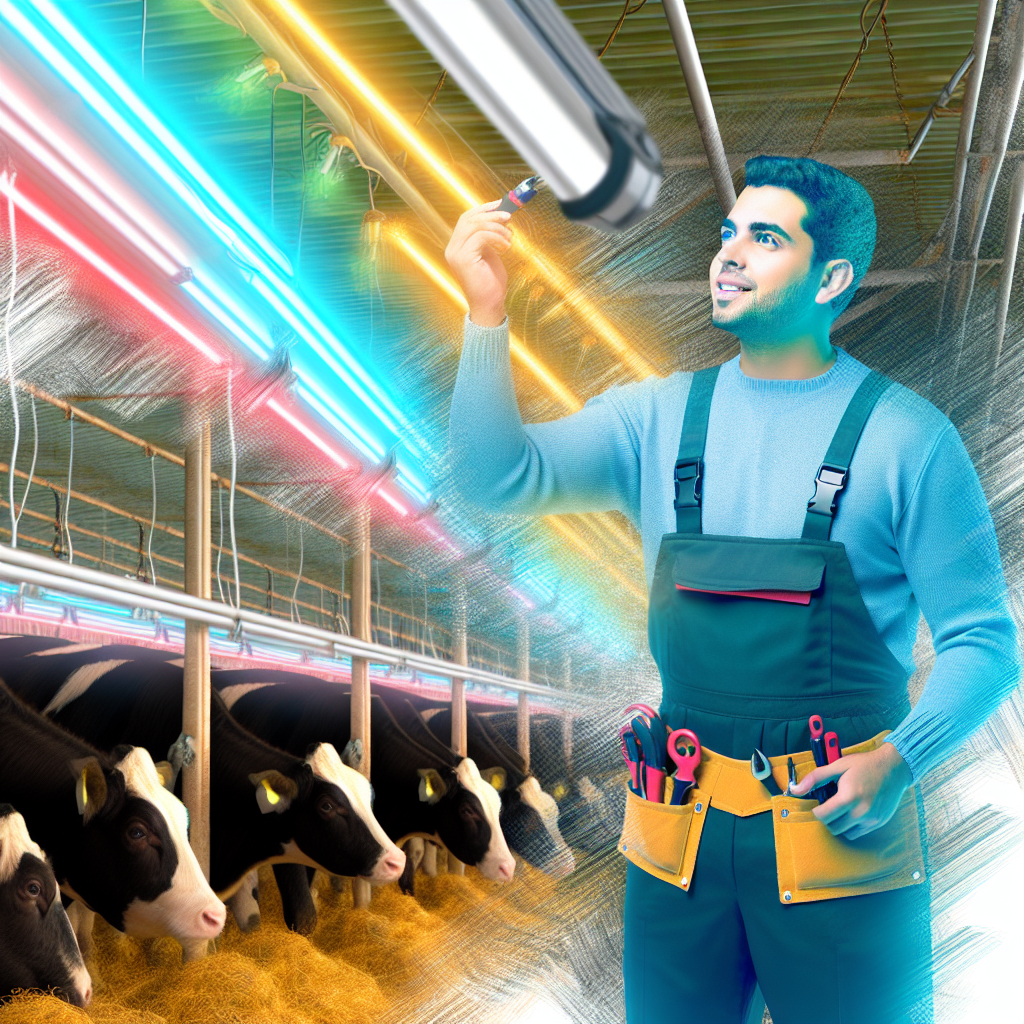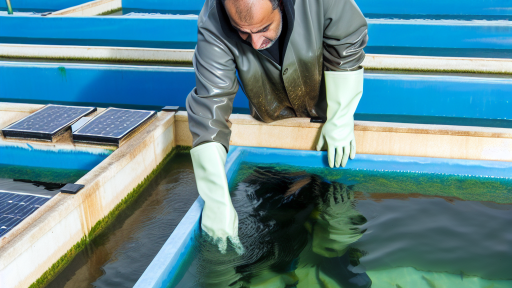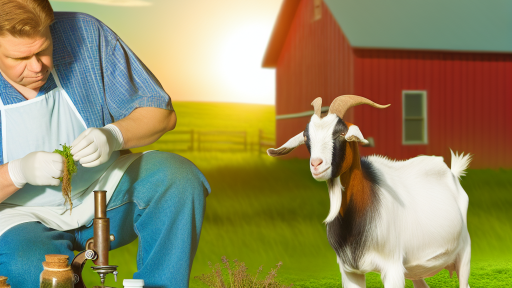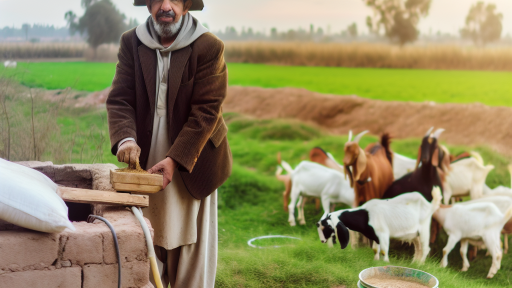Importance of Lighting in Livestock Housing
Enhancing Animal Welfare
Proper lighting significantly improves animal welfare in livestock housing.
Good lighting supports natural behaviors and reduces stress among animals.
Livestock thrive in environments that mimic their natural habitats.
Furthermore, adequate light exposure stimulates behavior and health.
Boosting Productivity and Performance
Effective lighting systems can boost productivity in livestock operations.
Chickens, for instance, produce more eggs with appropriate lighting.
Calves benefit from consistent light patterns, promoting growth rates.
Moreover, quality lighting can enhance feed intake and conversion.
Improving Health and Reducing Illness
Efficient lighting reduces the incidence of health issues among livestock.
Poor lighting can lead to infections and disease spread.
Animals exposed to proper lighting show fewer behavioral problems.
In turn, this supports overall herds’ health and reduces veterinary costs.
Energy Efficiency and Cost Savings
Modern lighting solutions are designed to be energy-efficient.
LED lights, for example, consume less power compared to traditional bulbs.
This efficiency results in significant cost savings for livestock producers.
Transform Your Agribusiness
Unlock your farm's potential with expert advice tailored to your needs. Get actionable steps that drive real results.
Get StartedAdditionally, improved lighting increases the lifespan of equipment.
Compliance with Regulations
Regulatory standards often require specific lighting conditions in housing.
Meeting these standards ensures livestock receive adequate light exposure.
Furthermore, compliance can enhance a farm’s reputation and marketability.
Ultimately, adherence to regulations can prevent legal issues.
Types of Lighting Solutions Available for Livestock
Natural Lighting
Natural lighting utilizes sunlight to illuminate livestock housing.
It reduces the need for artificial lighting during the day.
Daylight harvesting enhances animal health and productivity.
Additionally, it lowers energy costs for farmers.
LED Lighting
LED lighting is energy-efficient and long-lasting.
These lights emit less heat than traditional bulbs.
Consequently, livestock environments stay cooler.
LEDs also provide adjustable light colors and intensities.
Benefits of LED Lighting
- Energy savings improve overall farm profitability.
- Reduced maintenance makes them cost-effective.
- Enhanced visibility supports better animal management.
Fluorescent Lighting
Fluorescent lighting is another viable option for livestock housing.
This type of lighting offers bright illumination at a lower cost.
Farmers can use fluorescent lights in barns and poultry houses.
Moreover, they are available in various lengths and colors.
Key Considerations for Fluorescent Lighting
- Pair with reflectors to maximize light distribution.
- Choose appropriate color temperatures for specific needs.
- Maintain fixtures to ensure optimal performance.
Smart Lighting Systems
Smart lighting systems provide advanced control for farmers.
These systems allow for automation based on specific schedules.
Farmers can adjust lighting remotely via mobile devices.
This technology enhances the efficiency of livestock housing.
Advantages of Smart Lighting
- Improved animal welfare through appropriate light cycles.
- Reduced energy consumption benefits the environment.
- Customizable settings meet unique farm requirements.
Various lighting solutions offer unique benefits for livestock housing.
By understanding each type, farmers can make informed choices.
Energy Efficiency Considerations in Lighting
Importance of Energy Efficiency
Energy efficiency plays a crucial role in livestock housing.
Showcase Your Farming Business
Publish your professional farming services profile on our blog for a one-time fee of $200 and reach a dedicated audience of farmers and agribusiness owners.
Publish Your ProfileIt reduces operating costs while enhancing productivity.
Furthermore, it helps minimize the carbon footprint of farming operations.
Choosing the Right Lighting Technology
Selecting energy-efficient lighting technology is essential.
LED lights are a popular choice for livestock housing.
They consume significantly less energy than traditional bulbs.
Additionally, LED lights have a longer lifespan, reducing replacement costs.
Optimal Lighting Design
Effective lighting design maximizes energy efficiency.
Consider natural light sources whenever possible.
Windows and skylights can reduce reliance on artificial lighting.
Moreover, utilizing timers and sensors can help optimize light usage.
Monitoring and Maintenance
Regular monitoring ensures lighting systems remain efficient.
Scheduled maintenance can prevent energy waste.
For example, cleaning light fixtures improves brightness and effectiveness.
In addition, replacing burnt-out bulbs promptly helps maintain consistent lighting levels.
Training Staff on Efficient Practices
Educating staff on proper lighting practices is crucial.
Training can lead to more mindful energy usage in facilities.
Encouraging staff to turn off lights when not needed can save energy.
Consequently, a culture of energy efficiency will develop within the operation.
Delve into the Subject: Implementing Genomic Selection in Livestock
Natural vs. Artificial Light: Pros and Cons
Understanding Natural Light
Natural light benefits livestock housing in multiple ways.
It promotes animal welfare and enhances growth rates.
Moreover, natural light can reduce energy costs significantly.
Sunlight exposure supports the production of vitamin D in animals.
However, it comes with some drawbacks.
Weather changes can limit the amount of natural light available.
Additionally, excessive sunlight may lead to overheating in structures.
The Advantages of Artificial Light
Artificial light provides consistent illumination regardless of weather conditions.
It allows farmers to control lighting duration and intensity.
As a result, this flexibility can optimize productivity.
Artificial lighting enhances breeding efficiency in certain livestock.
Furthermore, it extends useful hours for farmers.
Nonetheless, energy consumption can be a concern.
Limitations of Artificial Light
Artificial light systems require significant initial investment.
They may also increase operational costs over time.
Additionally, not all artificial lighting options promote animal well-being.
Some may disrupt natural circadian rhythms.
Farmers must choose lighting systems carefully to avoid these issues.
Balancing Both Light Sources
Many livestock operations benefit from a combination of natural and artificial light.
This hybrid approach leverages the strengths of both systems.
Farmers can use natural light during the day.
Showcase Your Farming Business
Publish your professional farming services profile on our blog for a one-time fee of $200 and reach a dedicated audience of farmers and agribusiness owners.
Publish Your ProfileThen, they can supplement with artificial light as needed.
Practically, this means optimizing both energy use and animal welfare.
Farmers should monitor their lighting systems regularly for best results.
Gain More Insights: Breeding Techniques for Exotic Livestock
The Impact of Lighting on Livestock Behavior and Health
The Role of Light in Animal Welfare
Proper lighting significantly influences animal welfare in livestock housing.
Natural light affects animals’ circadian rhythms and overall health.
By mimicking natural light patterns, livestock exhibit less stress.
Consequently, this leads to better growth rates and higher productivity.
The Effects of Different Light Spectrums
Different light spectrums impact livestock behavior in unique ways.
For instance, blue light promotes alertness and activity in animals.
In contrast, red light can help calm livestock, reducing anxiety levels.
Farmers can observe behavioral changes based on light color used.
Enhancing Feeding and Reproduction Through Lighting
Lighting plays a vital role in feeding behavior and reproduction rates.
Inadequate light can lead to decreased feed intake among livestock.
Moreover, proper lighting stimulates reproductive cycles in certain species.
Specific light durations can trigger hormonal responses beneficial for breeding.
Cost-Effectiveness of Quality Lighting Solutions
Investing in quality lighting solutions leads to long-term benefits.
Efficient lighting systems reduce energy costs and enhance productivity.
Additionally, better lighting can decrease veterinary expenses associated with stress-related issues.
Overall, improved livestock health results in a more profitable operation.
Best Practices for Implementing Lighting in Livestock Housing
Farmers should consider several best practices when choosing lighting.
First, utilize energy-efficient LED lights for lower operating costs.
Second, ensure uniform distribution of light to avoid dark spots.
Lastly, implement a lighting schedule that aligns with livestock needs.
Learn More: Goat Housing Design for Better Livestock Health

Technological Innovations in Livestock Lighting Solutions
Energy-Efficient Lighting Systems
Energy-efficient lighting significantly reduces operational costs.
LED lights provide excellent brightness with minimal energy consumption.
These systems also last longer, reducing replacement frequency.
Farmers can expect lower electricity bills by switching to LEDs.
Smart Lighting Technology
Smart lighting systems offer tailored solutions for livestock housing.
Farmers can control light intensity and schedules remotely.
This technology helps in creating an optimal environment for the animals.
Automated Light Regulation
Automated light regulation adjusts lighting based on natural conditions.
These systems gauge daylight and modify artificial light accordingly.
This not only conserves energy but also supports animal health.
Health and Productivity Benefits
Proper lighting enhances the well-being of livestock.
Studies show well-lit environments improve animal behavior.
This leads to higher productivity rates in dairy and meat production.
Integrated Lighting Frameworks
Integrated lighting frameworks combine multiple lighting types.
This approach optimizes energy use while ensuring effective illumination.
Showcase Your Farming Business
Publish your professional farming services profile on our blog for a one-time fee of $200 and reach a dedicated audience of farmers and agribusiness owners.
Publish Your ProfileFarmers can integrate ambient and task lighting for best results.
Environmental Impact Considerations
Innovative lighting solutions also consider environmental sustainability.
They reduce carbon footprints while complying with regulations.
Responsible lighting choices foster a greener farming approach.
See Related Content: Nutrition and Feed Innovations in Fish Farming
Cost-Effective Strategies for Implementing Lighting Solutions
Assessing Your Needs
Begin by evaluating your specific lighting needs in livestock housing.
Consider the types of animals you are housing and their requirements.
Additionally, analyze the layout of the housing to determine lighting placement.
Gather input from experts and fellow farmers to help with your assessment.
Choosing Energy-Efficient Lighting
Select energy-efficient lighting options to minimize costs.
LED lights are increasingly popular due to their durability and low energy use.
For instance, they last longer and require less maintenance than traditional bulbs.
Moreover, consider using solar-powered lights in areas with ample sunlight.
Utilizing Natural Light
Leverage natural light whenever possible to reduce energy costs.
Orient the housing to maximize sunlight exposure during the day.
Incorporate windows and skylights to enhance natural illumination.
Ensure these openings are properly insulated to maintain temperature control.
Implementing Smart Controls
Install smart controls to optimize lighting efficiency.
Timers can turn lights on and off based on specific schedules.
Additionally, consider motion sensors that can activate lights only when needed.
This reduces unnecessary energy waste and lowers overall costs.
Regular Maintenance
Establish a regular maintenance schedule for your lighting systems.
Clean fixtures and replace burned-out bulbs promptly to ensure efficiency.
Routine checks can identify and resolve issues before they escalate.
Implementing these practices will extend the lifespan of your lighting solutions.
Regulatory Standards and Best Practices for Livestock Lighting
Understanding Regulatory Standards
Regulatory standards ensure the welfare of livestock in housing environments.
These standards stem from various agricultural and animal health organizations.
For instance, the American Society of Agricultural and Biological Engineers outlines minimum lighting requirements.
Moreover, the National Milk Producers Federation offers guidelines for dairy facilities.
Compliance with these regulations fosters healthier and more productive livestock.
Importance of Lighting in Livestock Housing
Proper lighting influences the behavior and health of farm animals.
It impacts their feeding patterns, reproduction cycles, and overall well-being.
For example, adequate light can enhance growth rates in poultry.
On the other hand, insufficient illumination may lead to stress and lower production.
Best Practices for Implementing Lighting Solutions
Farmers should employ various strategies for optimal lighting in livestock housing.
- Use LED lights for energy efficiency and longevity.
- Ensure adequate natural light by using transparent roofing materials.
- Control lighting duration with timers to mimic natural day-night cycles.
Transitioning between light levels also aids in animal comfort.
Moreover, adjusting light intensity can influence livestock activity positively.
Regular Assessment and Adjustments
Routine evaluations of lighting systems ensure compliance with evolving standards.
Farmers should monitor animal behavior closely to determine lighting efficacy.
If issues arise, adjustments may involve changing fixtures or repositioning lights.
Showcase Your Farming Business
Publish your professional farming services profile on our blog for a one-time fee of $200 and reach a dedicated audience of farmers and agribusiness owners.
Publish Your ProfileAdditionally, obtaining feedback from livestock health experts can guide improvements.
Case Studies
Successful implementation of lighting solutions has been documented in various farms.
For instance, Green Pastures Farm integrated LED systems, enhancing hog productivity.
The farm reported increased weight gain and improved feed efficiency.
Similarly, Sunshine Dairy observed higher milk yields after upgrading their lighting.
These examples underscore the significance of adhering to best practices in livestock lighting.
Additional Resources
The Transformation of U.S. Livestock Agriculture: Scale, Efficiency …
All the Bright Moves: Minimizing Light Cycle Disruptions in Animal …




